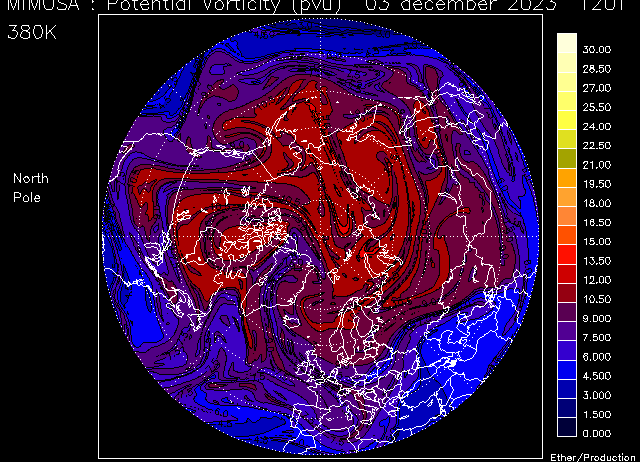Stratospheric ozone protects the Earth’s surface by absorbing the ultraviolet (UV) rays emitted by the sun. It forms naturally as a result of chemical reactions between UV rays and oxygen. Around 90% of ozone is found in the stratosphere, a layer of the atmosphere that begins 10 to 15 kilometers above the Earth’s surface at mid-latitudes. Stratospheric ozone forms what is known as the ozone layer.
Find out more about the various AERIS projects studying stratospheric ozone:
The Swedish SMR instrument, developed jointly with France and Finland, was launched on 20 February 2001 on board the Swedish mini-satellite ODIN . This microwave receiver is operational in the […]
The ILAS instrument, developed by the Japan Environment Agency (NIES), was launched on the ADEOS 1 satellite on 17 August 1996. It was a visible/infrared spectrometer, recording atmospheric absorption spectra […]
The POAM instruments were developed by the US Naval Research Laboratory (NRL) to measure the vertical distribution in the atmosphere of ozone, water vapour and nitrogen dioxide (NO2), as well […]
The SAGE II instrument was developed by NASA to provide the scientific community with a global and long-term description of the distribution of aerosols, ozone, water vapour and NO2. It […]

Several satellites and space-based instruments were launched in the 1990s-2000 to observe the ozone layer in the stratosphere. More generally, the objective was to better understand the chemistry of the middle stratosphere (stratosphere, mesosphere) and to validate chemistry-transport models to reproduce and predict the ozone hole. These instruments are generally spectrometers covering various spectral ranges, from microwave to ultraviolet. They record atmospheric absorption or emission spectra (level 1) from which inverse models can be used to produce columns or vertical profiles of atmospheric constituent concentrations (level 2) with very high accuracy.

The balloon data The French Space Agency (CNES) has been supporting scientific ballooning since its establishment, particularly in atmospheric science measurements, currently launching about 50 balloons a year. Balloon platforms […]

The project The NDACC (Network for Detection of Atmospheric Composition Change), formerly NDSC (Network for Detection of Stratospheric Change), is an international network for long-term monitoring of the stratosphere and […]

